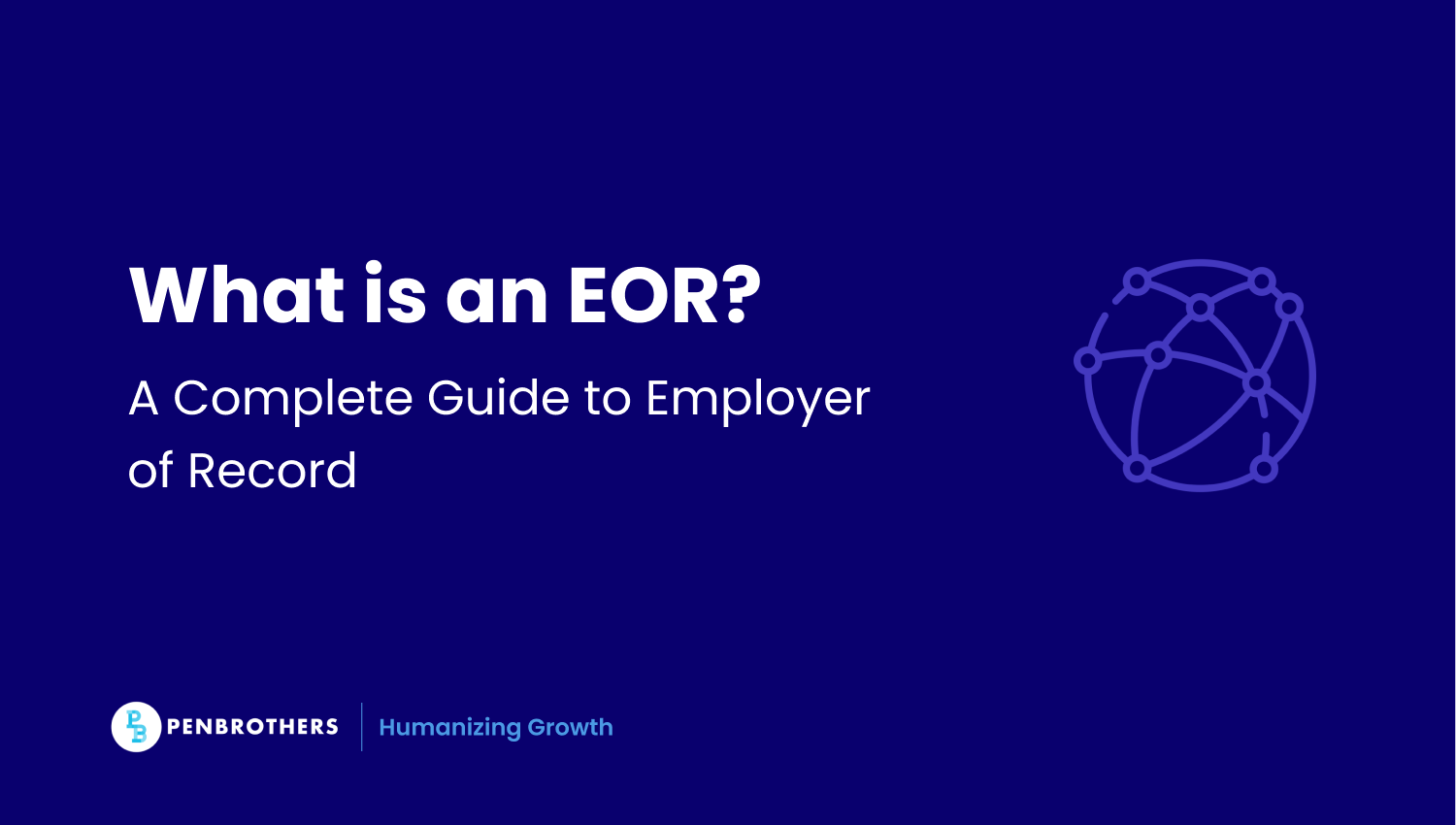What's Inside?
Outsourcing Tax: What Is Official, What Is Proposed, What Is Noise

The headlines scream “25% outsourcing tax.” The actual math reveals a 58% effective cost increase.
That gap between perception and reality tells you everything about how this issue is being covered. The proposed HIRE Act doesn’t just impose a 25% excise on offshore service payments. It simultaneously strips away your ability to deduct those costs. When you lose the 21% federal tax shield while paying the 25% excise, your after-tax cost jumps by 58%, not 25%.
Most coverage misses this. They focus on the headline rate while ignoring the compound effect.
This pattern of hidden complexity runs throughout outsourcing tax issues. U.S. withholding tax defaults to 30% when treaty documentation goes missing, a routine occurrence that companies discover only when payments get trapped. Permanent establishment rules create corporate tax liability through seemingly innocent operational decisions. VAT reverse charges turn you into a tax collector for foreign governments you’ve never heard of.
Most search results chase the HIRE Act news cycle without providing the strategic framework you need to protect your operations. This tracker will separate what’s law from noise, then give you the systems to protect cost and continuity regardless of which way political winds blow.
We’ll cover the full stack. Taxes, compliance, contracts, and the operating controls that actually change your landed costs.
Related reading:
- The U.S. Government Shutdown Is a Wake-Up Call for Offshore Resilience
- Trump on IT Outsourcing: HIRE Act Facts, Risks, and Next Steps
- The H-1B Visa $100K Fee: Policy Details and Industry Reactions
- Outsourcing to India and the HIRE Act: What U.S. Companies Should Do Now
- Fed Rate Cuts and Outsourcing in 2025: Executive Guide
What Is the Proposed U.S. Outsourcing Tax?
The term “outsourcing tax” primarily refers to legislative proposals aimed at discouraging U.S. companies from moving jobs and services overseas. The most prominent of these is the HIRE Act, which has been introduced in Congress but has not been enacted into law.
The core mechanics of the proposal are what matter for strategic planning:
Key Components of the Proposed Tax
- 25% Excise Tax: The headline figure is a proposed 25% excise tax levied on the value of services procured from offshore locations. This is a direct tax on the act of outsourcing.
- Disallowance of Deductions: This is the critical element most analyses miss. The proposal would simultaneously eliminate the ability for a company to deduct these offshore service payments as a business expense. A standard 21% corporate tax rate means companies lose a significant tax shield, compounding the financial impact.
The combination of these two factors creates the much-cited 58% effective cost increase. It’s not just the 25% tax; it’s the tax plus the loss of a 21% deduction, which fundamentally alters the economic equation of an offshore arrangement. As of late 2025, this remains a proposal, not a law.
What Outsourcing Tax Actually Covers
In essence, “outsourcing tax” is a catch-all term for various ways governments can reach into your offshore arrangements and extract money.
Excise taxes represent the most direct threat. The government charges you for the act of buying offshore services. The proposed HIRE Act would hit you with 25% on top of what you’re already paying your vendor.
U.S. withholding tax operates differently. Default rate is 30% if you don’t have proper treaty documentation. I’ve seen this hit companies quarterly who assumed their vendors had “handled all that.”
VAT and GST on imported services create another layer of complexity. Many countries require you to self-assess and pay consumption tax when you “import” digital or professional services through reverse charge mechanisms. You become responsible for calculating and remitting taxes in jurisdictions where you don’t even have a legal entity.
Transfer pricing becomes relevant when you’re moving money between related entities, like paying your own Global Capability Center. Tax authorities in both countries will scrutinize whether you’re charging arm’s length rates. Get this wrong and you face adjustments, penalties, and potential double taxation.
Permanent Establishment risk is perhaps the most dangerous. Mismanage your cross-border setup and suddenly your “foreign” vendor creates a taxable presence that subjects you to full corporate tax liability in their country.
OECD Pillar Two represents the global 15% minimum tax designed to eliminate profit-shifting strategies to low-tax jurisdictions. For large multinationals, this fundamentally changes the economics of tax optimization.
Domestic deduction disallowance eliminates your tax shield. The government says you can’t deduct offshore costs as business expenses. This is the real killer in the HIRE Act: it removes the 21% federal tax benefit that makes the math work.
Here’s how these play out in practice:
Your $100 offshore services invoice becomes $125 with a 25% excise before any other taxes kick in. Miss the treaty paperwork, and 30% of your payment vanishes to the IRS. Need software development from the Philippines? You might owe 12% VAT on that contract.
What Counts as Outsourcing?
In the context of U.S. tax law and international agreements, “outsourcing” is not a single, legally defined term. Instead, whether an arrangement is subject to specific taxes depends on the nature of the service, the location where the work is performed, and the legal relationship between the parties.
How Tax Authorities Define the Work
- Services Rendered: The focus is on payments made for services performed by a vendor or entity outside the United States. This includes a wide range of functions, from IT and software development to customer support, accounting, and professional services.
- Independent Contractors vs. Employees: Tax rules distinguish sharply between payments to a third-party service provider (like a BPO firm) and payments to a direct employee located in another country. The proposed outsourcing taxes are aimed at the former.
- Permanent Establishment (PE) Risk: A crucial distinction is whether your offshore operation creates a “permanent establishment” in the host country. If your vendor’s team functions as a dependent agent acting on your behalf, you could be deemed to have a taxable presence there, subjecting you to that country’s corporate taxes. This is a risk that exists today, independent of any proposed U.S. laws.
The core issue is substance over form. Tax authorities look past the label of “outsourcing” to determine where value is created, where work is physically performed, and which jurisdiction has the right to tax the income generated.
What Is Official vs. Proposed vs. Noise (Updated as of Publication)
The core issue is signal versus noise. Here’s how I categorize the current landscape:
| Category | Item | Status | What to watch |
| Official | U.S. corporate tax rate (21%), existing Chapter 3/4 withholding mechanics, country VAT/GST reverse-charge rules, PE tests | In force | IRS notices and publications, Federal Register updates, destination-country tax authority releases |
| Proposed | HIRE Act, No Tax Breaks for Outsourcing Act | Still Proposals: These bills have been introduced in various forms over the years but have not been passed into law. They represent ongoing legislative concepts rather than imminent policy changes. | Congress.gov for official bill status, House Ways & Means and Senate Finance Committee agendas for any movement. |
| Rumor/Noise | Broad U.S. service tariffs | Not an active policy: The focus remains on targeted legislative proposals, not broad, class-wide tariffs on offshore services. | USTR and Federal Register for formal actions. Rely on primary sources, not social media speculation. |
Key gatekeepers: House Ways & Means and Senate Finance committees control the legislative calendar. Treasury and IRS will write the actual implementation rules if anything passes. Committee agendas determine whether proposals live or die.
Primary tracking sources:
U.S. Exposure Today: Numbers That Matter
Let’s establish the baseline: 21% federal corporate rate serves as your anchor, though state and local taxes will vary.
Here’s why the proposed changes can be challenging. A 25% excise plus lost deductibility doesn’t just add 25% to your costs. For many companies, the effective increase jumps to about 58% when you compare today’s after-tax cost versus the proposed structure. Add state taxes and contract gross-up effects, and you’re looking at even higher spikes.
But I want you to focus on the exposures that are already live, because these are the risks that can hurt you right now:
Default 30% U.S. withholding kicks in when you don’t have valid treaty documentation. The assumption that someone else is managing compliance is where I see most failures.
Permanent Establishment risk emerges when your cross-border setup creates a taxable presence through people, authority to contract, or fixed place of business. You could trigger full corporate tax liability in the vendor’s country without even realizing you’ve crossed that line.
The companies getting blindsided by these exposures aren’t the ones who ignored compliance. They’re the ones who assumed someone else was handling it properly.
Country Snapshots That Change Your Landed Cost
Use these snapshots to brief your procurement, tax, and legal teams before you price or renegotiate anything. Each jurisdiction has its own quirks that affect your bottom line.
India
GST on export of services: Remains zero-rated, provided payment is received in convertible foreign currency and other conditions are met. This continues to be a stable and favorable regime for service importers. → Source: Central Board of Indirect Taxes and Customs (CBIC)
Treaty relief: The U.S.–India tax treaty can reduce withholding tax on technical service fees to 10%. Proper documentation (Form 10F, a valid Tax Residency Certificate) is non-negotiable to claim this benefit. → Source: Income Tax Department
Privacy obligations: The Digital Personal Data Protection Act (DPDPA) is now law. U.S. companies handling the data of Indian residents must comply with its consent and data processing requirements. → Source: Ministry of Electronics and Information Technology (MeitY)
Philippines
VAT on digital services: A 12% VAT applies to digital services provided by non-resident providers. For B2B transactions, the responsibility to withhold and remit this tax often falls on the domestic company paying for the service via a reverse charge mechanism. → Source: Bureau of Internal Revenue (BIR)
Withholding Tax: The standard corporate income tax rate for non-resident corporations is 25%, which can function as a withholding tax on certain types of income. The U.S.-Philippines tax treaty can reduce this, but requires careful service characterization. → Source: Department of Finance
Mexico
VAT structure: 16% standard rate, and many digital services fall within scope.
→ Servicio de Administración Tributaria (SAT)
Treaty benefits: Some technical assistance can be reduced to 10% or relieved entirely absent PE under the U.S.–Mexico treaty.
Compliance requirements: CFDI e-invoicing is mandatory for B2B transactions. No exceptions.
Poland
VAT mechanics: 23% regime, but B2B cross-border services to a U.S. recipient typically use reverse charge, so no Polish VAT charged by the supplier.
→ Krajowa Administracja Skarbowa (KAS)
Withholding approach: 20% domestic rate on certain payments, but the U.S.–Poland treaty generally exempts business profits without PE. Documentation and due diligence rules are strict.
Cost Modeling
Let me show you how the numbers actually work when policy hits your P&L. I’ll use a practical example that demonstrates the compound effect.
Assumptions
- Baseline services spend = $5,000,000
- U.S. federal corporate tax rate = 21%
- Proposed excise on covered offshore payments = 25% (HIRE Act draft concept)
- No change to onshore spend
The formulas that matter
Today (offshore, deductible): After-tax equivalent ≈ Cash × (1 − Corp Tax Rate)
Proposed (offshore, excise + non-deductible): Cash × 1.25, no deduction
Hybrid mix: Offshore share × proposed rule + Onshore share × current rule
Automation offset: Reduce offshore share by the modeled percent
Worked example
Today: $5,000,000 × (1 − 0.21) = $3,950,000 after-tax equivalent
If enacted as proposed: $5,000,000 × 1.25 = $6,250,000 (no deduction)
Effective increase versus today: $6,250,000 ÷ $3,950,000 − 1 ≈ +58%
The combination of excise tax and lost deductibility creates an effective increase of 58%, not 25%.
Hybrid scenario with automation
Let’s model a more realistic response: 60% offshore, 40% onshore, with a 20% automation offset applied to the offshore slice (effective offshore share 48%).
Modeled cost breakdown:
- Offshore: $5,000,000 × 0.48 × 1.25 = $3,000,000
- Onshore (deductible): $5,000,000 × 0.40 × (1 − 0.21) = $1,580,000
- Total ≈ $4,580,000, which represents +16% versus today’s $3,950,000 after-tax equivalent
The biggest cost drivers
- Excise on covered payments (25%)
- Loss of deductibility removes the 21% tax shield
- WHT leakage without proper treaty paperwork
- VAT/GST reverse charges where applicable
Contracts and Governance That De-Risk the Tax Hit
The best defense is building contracts that bend without breaking when policy changes. Here’s what I believe works.
Change-in-Law clauses should be triggered by new taxes or rules. Include a 30–60 day renegotiation window, fee adjustment mechanism, and termination rights for affected SOWs. Don’t just copy boilerplate language; make sure it covers the specific risks we’re discussing.
Tax gross-up versus tax-inclusive pricing requires explicit clarification about which taxes are included in the quoted price. A buyer-side excise may sit outside routine gross-ups, so require dual quotes showing both tax-exclusive and tax-inclusive pricing.
Location-of-work reporting demands quarterly officer attestation of service locations, plus prior approval for new delivery centers and subcontractors. PE risk management starts with knowing where work actually happens.
Termination assistance provisions should include pre-defined transition windows, step-down fees, and deliverable escrow for continuity. You need the ability to extract yourself gracefully if conditions change.
Data residency and access continuity protections keep your data accessible if geography or policy shifts constrain a vendor. Don’t let compliance requirements hold your data hostage.
Attestation and audit rights should tie to SOC 2 Type II or ISO/IEC 27001 standards, with breach-notice SLAs that actually matter.
Compliance Checklists You Can Action Today
These checklists address the exposures that are already live. Start here.
WHT Documentation
- Collect the appropriate W-8 forms (W-8BEN-E for entities, W-8BEN for individuals)
- Verify that legal names, addresses, and taxpayer IDs match across documents
- Confirm citation of relevant treaty articles and limitation-on-benefits criteria
- Calendar renewal deadlines before forms expire
Permanent Establishment Controls
- Prohibit dependent agent behavior or authority to contract from the foreign site
- Ring-fence scope of work and maintain supervision from the U.S.
- Limit business trips, maintain detailed records, and conduct annual reviews
Data Processing Requirements
- Define controller and processor roles clearly, establish security baselines
- Map obligations to DPDPA in India and other relevant privacy regimes
- Set specific breach notification SLAs that trigger real consequences
Procurement Preparation
- Develop vendor location heatmaps showing where work actually happens
- Require rate cards showing both tax-exclusive and tax-inclusive pricing
- Document automation roadmaps and timeline assumptions
- Verify compliance controls and certifications before signing anything
How to Use This Tracker and Our Update Cadence
Here’s how we maintain this resource and what you should expect.
Where We Source Updates
U.S. policy: Congress.gov for bill status, Ways & Means and Senate Finance for committee action, IRS Newsroom for guidance, Federal Register for regulations, USTR for trade policy
International authorities: CBIC for India GST changes, BIR for Philippines VAT updates, SAT for Mexico compliance requirements, KAS for Poland withholding rules, plus relevant data protection regulators
What We Add with Each Update
- Status table changes reflecting official versus proposed versus rumor classifications
- New cost modeling scenarios as legislative drafts evolve
- Updated contract language recommendations and compliance checklist refinements
The key insight here is this: while everyone’s focused on what might happen, smart operators are fixing what’s already broken. Get your WHT documentation in order. Audit your PE exposure systematically. Build contracts that can handle policy shocks.
The companies that survive the next wave of outsourcing regulation won’t be the ones with the best lobbyists—they’ll be the ones with the best operational discipline.
Updated October 15, 2025 | Next update pending official developments




